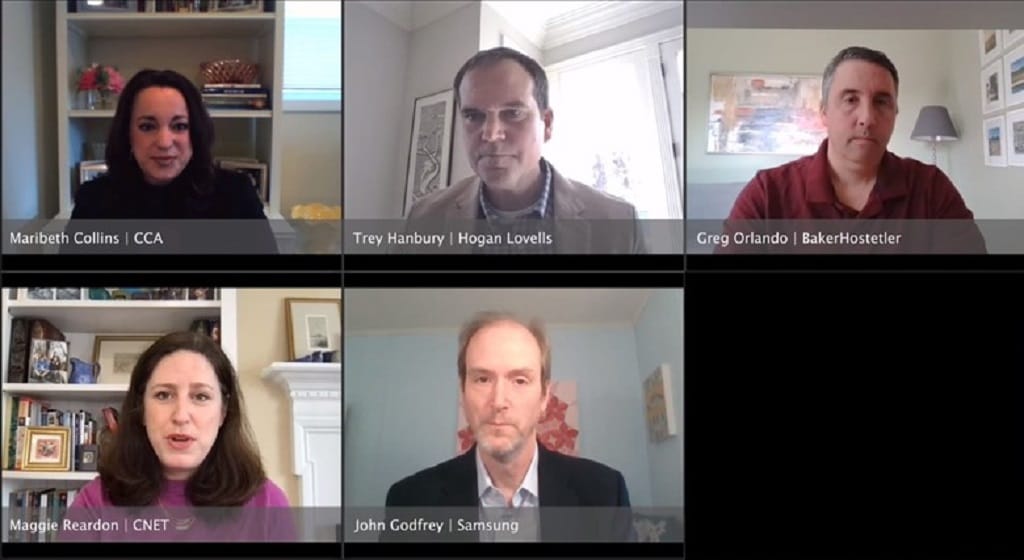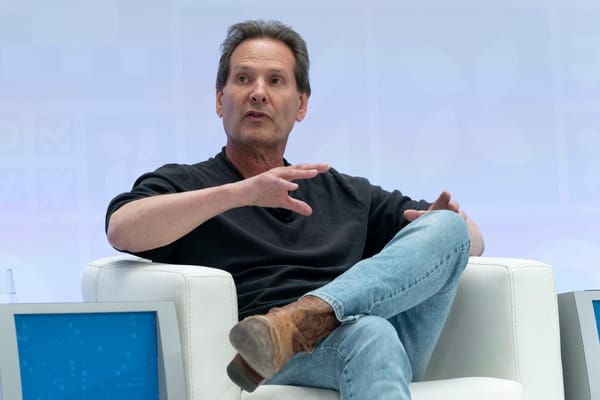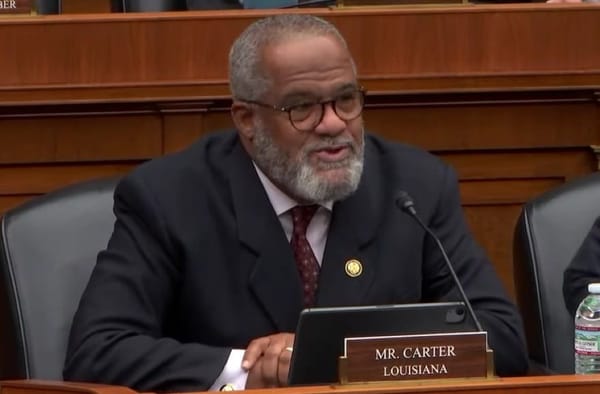Panelists Debate Increasing Speed Threshold In New Bills
March 31, 2021 – With $100 billion set for some recently-introduced broadband infrastructure bills, Congress’s plan to increase the speed definition for broadband is causing a stir through the tech industry. There’s a lot of debate occurring on Capitol Hill right now regarding broadband deployment,

March 31, 2021 – With $100 billion set for some recently-introduced broadband infrastructure bills, Congress’s plan to increase the speed definition for broadband is causing a stir through the tech industry.
There’s a lot of debate occurring on Capitol Hill right now regarding broadband deployment, and that debate is about defining broadband, said Samsung’s John Godfrey Tuesday during a panel at the Competitive Carriers Association (CCA) mobile carriers show.
These new symmetrical speed thresholds are a big problem for the wireless industry, he said. If these new thresholds pass into law, they’re going to disqualify a lot of companies from this massive amount of funding that Congress is considering, he said.
The Leading Infrastructure for Tomorrow’s America (LIFT) Act would update the current broadband speed definition of a “served” area from 25 megabits per second (Mbps) download and 3 Mbps upload to a symmetrical 25/25 Mbps for low tier, and 100/100 Mbps for mid-tier.
Some former commissioners from the Federal Communications Commission have also been making their Zoom rounds on Capitol Hill, providing their input on the proposed legislation. Former FCC Chairman Tom Wheeler defended the bill, calling it a “once-in-a-generation opportunity” to get fiber to the whole country, while former commissioner Mike O’Rielly said the suggested change to broadband upload speeds “does not reflect reality for now or any time soon,” and would push currently unserved areas further to the back of the line to get service.
Godfrey went into further detail, using video conferencing software like Zoom as an example of unnecessary spikes to the upload definition. During a video conference call, the other participant’s streams are using your download bandwidth, but only you are using your upload bandwidth, he explained.
I’m not opposed to increasing the speed definition of broadband, but making it a symmetrical threshold, even as high as 100/100 Mbps, is unrealistic for wireless, Godfrey added.
Other panelists agreed. Be careful of perfect because it’s the enemy of good, said Greg Orlando, attorney at the firm BakerHostetler, quoting the aphorism. The key right now is to get people connected to broadband and then improve that connection over time, he said.
Maribeth Collins, senior director for legislative affairs at CCA, offered a different perspective from the view of Capitol Hill. Congress recognizes the challenge of symmetrical speed thresholds, she said. This legislation favors fiber right now, but Congress does want 5G wireless to go hand in hand with fiber, she said. Everyone wants the opportunity to connect not just at home, but also on the go or from different locations, and policymakers recognize that, she said.
The panel also discussed recently-funded broadband programs such as the new Emergency Connectivity Fund, which expands on the current E-Rate program, funding that subsidizes broadband connections for schools and libraries. It allows subsidized broadband for hot spots at home, among other things.
Trey Hanbury, attorney for the firm Hogan Lovells, criticized the ECF program for not including smartphones as eligible connected devices. He said it doesn’t make sense that it allows for hot spots but not the smartphones that are often used to create those hot spots.
The panel expressed optimism for the increased focus on broadband deployment and the traditional bipartisan work in this area. The pandemic has made it clear how essential broadband is, Hanbury said. If there’s anything that breaks the political gridlock right now, it is broadband, he said.










Member discussion